| Edibles
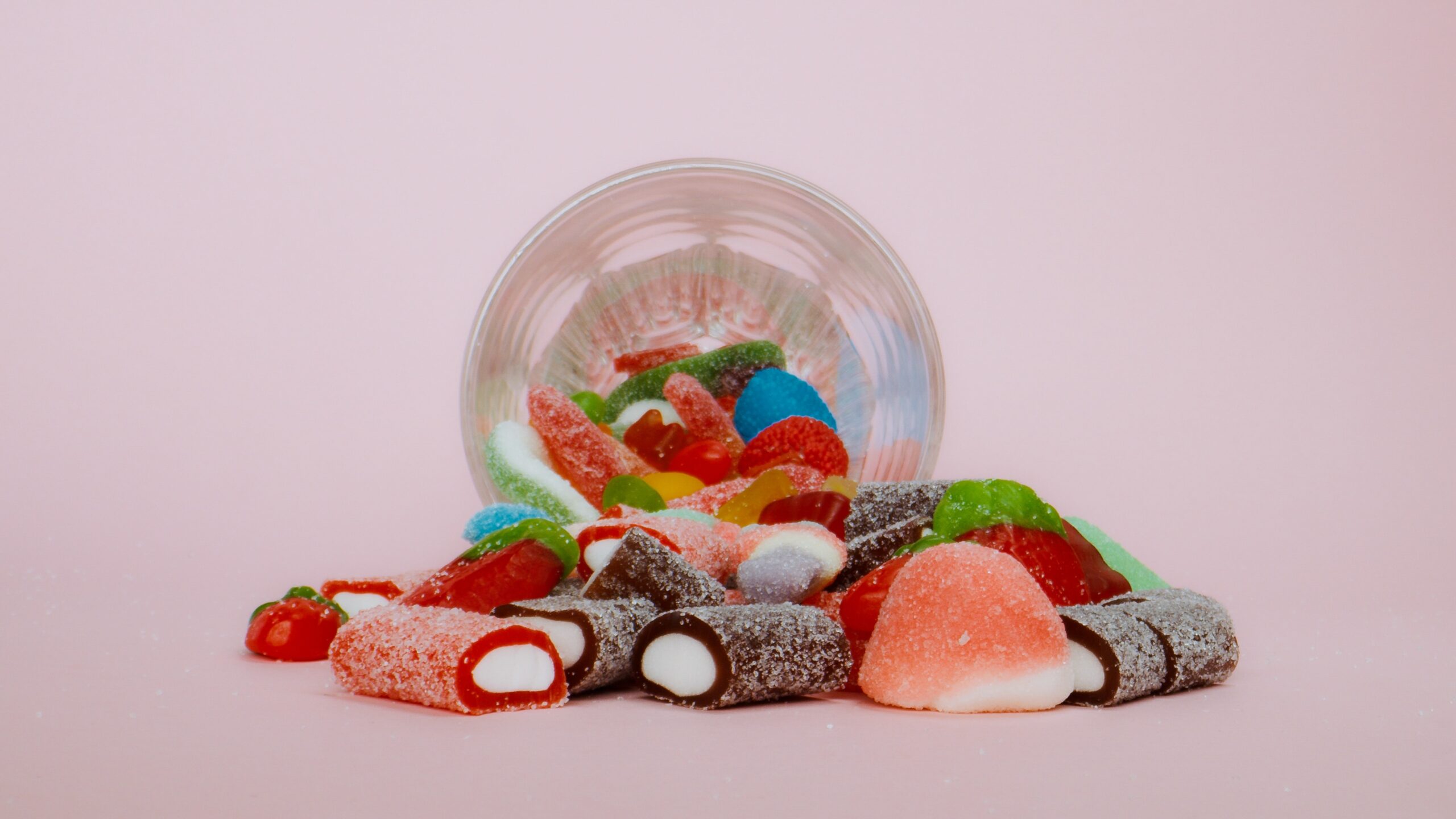
Cannabis edibles are all the rage, but they’re really nothing new. In fact, India incorporated a cannabis-infused tea called “bhang” as a traditional beverage as early as 1,000 BC. An edible paste called “majoun,” a mixture of honey and cannabis, originated in Morocco around the same time.
Still, the commercial cannabis market has exploded in recent years. Twenty years ago, the only type of weed edibles you could find were the kind you baked in your kitchen. And that was risky business–all dosing was a guesstimate, and you had to work pretty hard to perfect the science of a perfectly portioned weed-infused treat.
Now, thanks to Leafly, you can find a wide variety of edibles in dispensaries across the country. Even some restaurants are serving cannabis-laced concoctions, like hemp-infused cappuccinos or pastries. The formulas available vary, too, so cannabis edibles are accessible to a broader range of consumers than ever before.
With THC-infused formulas that spark the cannabis high that recreational consumers are after, plus edibles infused with non-psychoactive therapeutic cannabinoids like CBD and CBN, there’s a little something for everyone.
And we probably don’t have to explain why edibles have gained so much traction (they’re delicious!), but the convenience of a portable, discreet cannabis dose can’t be overlooked. The effects of an edible may even last longer compared to other dosing methods.
In other words, cannabis edibles are the delicacy you may have been missing in your life. Here’s everything you need to know about different edible product types, dosages, risks, and benefits before you dive in:
Table of contents
Most Popular Edibles

We mentioned that there are many different edibles types and cannabinoid formulas available, but it’s hard to truly convey the immenseness of options. In short, you can find virtually any edible your heart desires, from sweet and sour candies to chewing gum and even oral sprays.
Some edible doses are more popular than others, and you’ll most commonly find the following products when shopping for cannabis edibles:
- Gummies: Gummies are easily the most common type of cannabis edible you’ll find in stores or online. These usually come individually portioned and help hide the “weed flavor” that some people aren’t fond of.
- Chocolate: Edibles in the form of chocolate are pretty self-explanatory, but keep in mind that these can either be individually portioned or come as a full bar of chocolate that contains multiple servings.
- Tinctures: Tinctures are more commonly used for therapeutic use, but they work great for anyone looking for a fast-acting recreational dose, too. This type of edible is a liquid designed to be dropped under your tongue where it can be absorbed rapidly, so unlike most edibles that take over an hour to kick in, you can feel an edible dose in about 30 minutes.
- Beverages: THC-infused beverages are unique because they are consumed slowly, offering a smoother onset and longer-lasting experience than most edible doses. THC-infused drinks are becoming a popular replacement for alcoholic beverages at social events in some areas.
- Other: The variety of edibles you can find in today’s market is truly endless. If you’re looking, you’ll find a wide selection of baked goods, candies, gum, mints, and even “infused ingredients” that you can use to make your edible concoctions at home, like THC-infused honey, peanut butter, or cooking oils.
Benefits
Taking cannabis in edible form has its benefits, like:
- Convenient, portable doses: Edibles don’t require you to step outside, which is excellent for those with no convenient place to smoke cannabis flower. Plus, the pre-portioned doses are ready for when you’re at home or on the go.
- Longer lasting effects: Because of the way that cannabinoids are metabolized in the gut, edibles usually provide longer-lasting effects than other dosing styles. While the effects from inhaled cannabis usually last a couple of hours, edibles can last 5 hours or more.
- Low-profile dosing: Edibles are incredibly discreet, leave behind no smell, and won’t turn any heads! If discretion is important to you, edibles are the way to go.
Risks
Like all cannabis products, there are risks involved with taking edibles. Of course, the potential risks associated with THC, CBD, and all other cannabinoids are significantly lower when cannabis edibles are used responsibly.
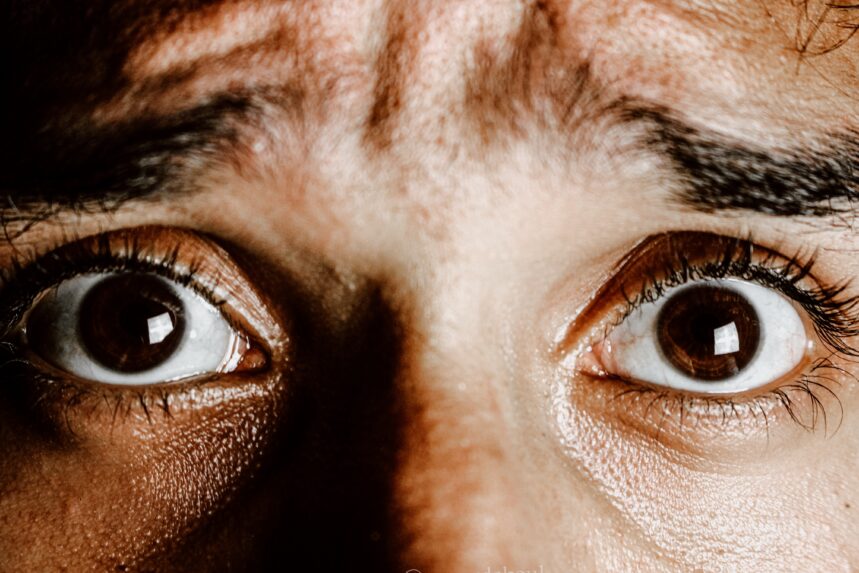
Some potential side effects of THC, especially at high doses, include:
- impairment to motor function and cognitive function
- sedation
- anxiety or paranoia
- increased heart rate
- nausea and vomiting
- hallucinations
The potential side effects for many of the non-psychoactive cannabinoids (like CBD) vary but generally include:
- Headaches (usually when taking too much)
- tiredness
- diarrhea
- changes in appetite
- changes in weight
Keep in mind that THC, CBD, and other cannabinoids can interact with some medications, so talk to your doctor before trying edibles if you take a regular prescription.
Edible Dosage Guide
Whether you’re looking at CBD edibles, THC edibles, or a different cannabinoid infusion, edible dosages are measured in milligrams. There are two ways that the dosage information can be presented–the label may tell you how many milligrams is in each portion, or it may give you a total dosage amount for the entire bottle or package.
If you see that the label says something like “10 mg of CBD per piece,” then you know exactly what dosage is offered. If the package claims to have 100 mg of THC and there are 10 pieces, then you know that each serving is 10 milligrams.
Once you have an idea of how potent each serving is, you’ll need to figure out what dosage you need. Everyone’s dosage threshold varies, so you may find that you need to tweak your dose a couple of times before you find your sweet spot. Still, if you’re totally new to edibles, here are some dosage guidelines to start with:
THC
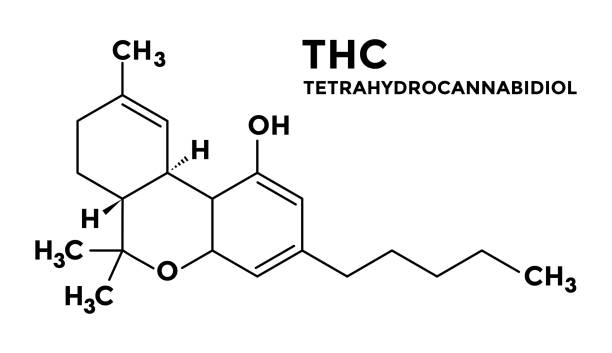
Tetrahydrocannabinol – THC – structural formula. Substance from cannabis sativa
THC edible dosage can range from 1-100 mg, so there’s plenty of room for adjustment. Typically, though, you’ll find doses ranging from 5-30 mg when shopping for pre-made THC edibles.
Your edible dosage mainly depends on your THC tolerance and the effects you’re after.
For mild effects:
- Consumers with no THC tolerance may enjoy a dose of between 2 and 5 mg.
- Consumers with a moderate THC tolerance may enjoy a starting dose of 10 mg.
For stronger effects:
- Those with no THC tolerance at all may experience more potent effects from doses between 5 and 10 mg.
- Consumers with moderate THC tolerance may need to start with 20-30 mg for more potent effects.
CBD
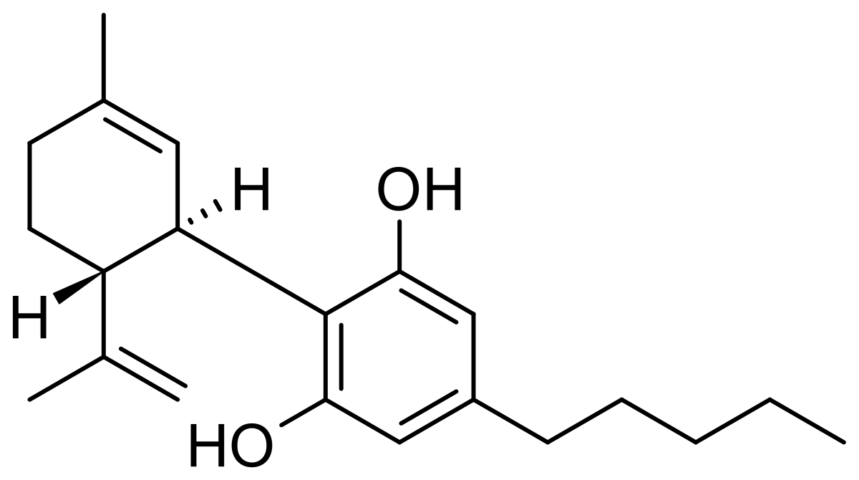
CBD Molecule
CBD does not produce any psychoactive effects and is generally used for therapeutic purposes, so the best dosage varies greatly by person. Typical dosages range from 5-30 mg of CBD.
Because there are no psychoactive effects, the risk of taking too much is less severe. Still, the best way to find the most effective dosage is by starting small and slowly increasing your dosage over time.
Consumers who have no experience with CBD may want to start with 5 mg. Before adjusting your dosage, allow plenty of time to feel the effects (Remember: Edibles can take up to 90 minutes to kick in).
If you aren’t sure where to start, check out our CBD Gummies reviews for the low down on dosages, flavor profiles, and which brands are best.
CBD + THC
CBD and THC balance each other’s effects when combined, and many people enjoy taking the two together. You can find recreational products that offer a 1:1 ratio of CBD: THC, but products that contain a moderate CBD dose paired with a low THC dose are becoming more popular.
For instance, these Strawberry Gummies contain 20 mg of CBD and 1 mg of THC. These are designed to provide a mild, therapeutic euphoria that’s relaxing but still incredibly functional.
CBG + THC
CBG and THC are similar to the CBD + THC combination. CBG isn’t psychoactive so you may find products with equal amounts of both cannabinoids.
These Pear Gummies contain 10 mg of CBG and 10 mg of THC. Keep in mind that CBG isn’t psychoactive, so this 10 mg THC dose is a mild to moderate dose for most consumers. Plus, the added CBG boost is excellent for leveling you out and helping to manage stress.
CBN + THC
Both CBN and THC are often said to have relaxing effects, so this combination is usually chosen for nighttime use. CBN doesn’t produce psychoactive effects like THC, but it’s thought to be more potent than most cannabinoids and is generally found in smaller doses around 5-10 mg.
These Elderberry Gummies combine 10 mg of THC and 5 mg of CBN with an Indica-dominant terpene profile to help promote more restful sleep.
Delta-8 THC
Delta-8 is a THC analog slightly less potent than traditional THC products, so you may regularly find products with marginally higher dosages. Typically, even consumers with a low THC tolerance take between 5-20 mg of Delta-8, and some products offer 50 mg or more doses.
These 5 mg Delta-8 gummies are a great starting point for most consumers. Alternatively, a Delta-8 oil tincture can give you ultimate control over your dosage and offer fast-acting effects.
One major benefit to Delta-8 edibles is that they are made from hemp, which means they are legal in most states, including many where traditional THC products are still restricted.
What are the Effects?
Edible formulations vary greatly, so we can’t easily summarize what you can expect from your edible experience. In general, expect the effects of a digested edible to take roughly 90 minutes to kick in, while sublingual edibles may take effect in about half an hour.
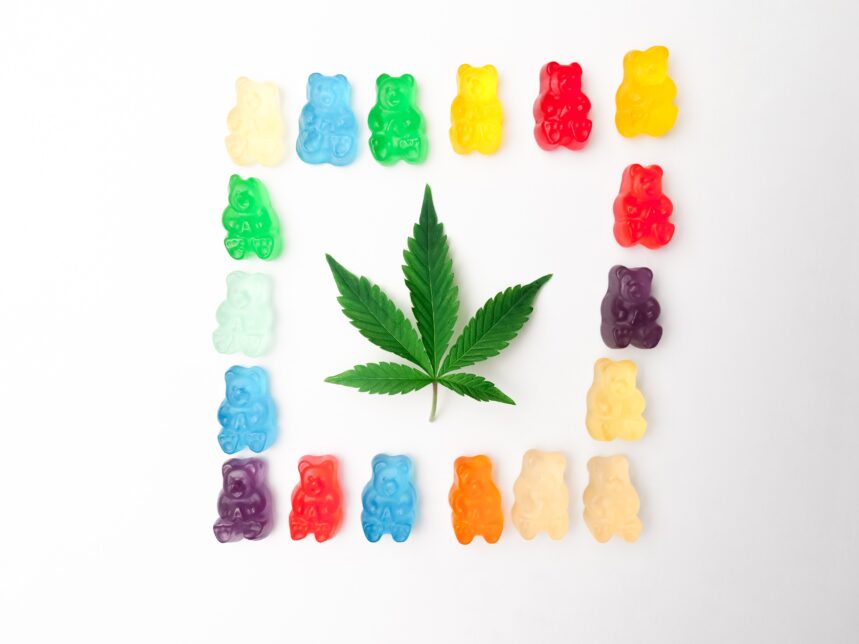
Commercially-produced edibles provide more consistent effects than homemade edibles. When you buy edibles from a legitimate cannabis brand, you may even be able to choose from different formulas or terpene combinations, meaning you can fine-tune the effects. In addition to different cannabinoid combinations, you may find these three strain varieties:
Sativa
Sativa strains, or edibles containing Sativa-dominant terpene profiles, are often described as having “uplifting, energizing” effects. This is the type of edible you want to grab for daytime use if you’re looking for a creativity boost or otherwise want a more functional cognitive experience.
Indica
Indica dominant terpene profiles are more relaxing on the other end of the spectrum and provide more body euphoria than other terpene profiles. These are the types of edibles you want for unwinding, improving sleep, or calming your body and mind.
Hybrid
Hybrid profiles are exactly what you’d think–an equal mix of Sativa and Indica terpenes. These products are generally more balanced than either the energizing or relaxing profiles above, but they also provide the most significant variation in effects between one product and another.
How to Consume

First and foremost, read the package label carefully to ensure you understand the dosing information and dosing style. Some edibles are meant to be eaten and are metabolized during digestion, while others are taken sublingually, which means you hold them under your tongue for quick absorption.
If you’re new to edibles, pay attention to your dosage and the time you take your edible dose. Then, allow at least 90 minutes to feel the full effects. We recommend trying THC edibles for the first time at home or in another comfortable environment, and always start low and slow and work your way up to larger doses.
Frequently Asked Questions
How long do edibles last?
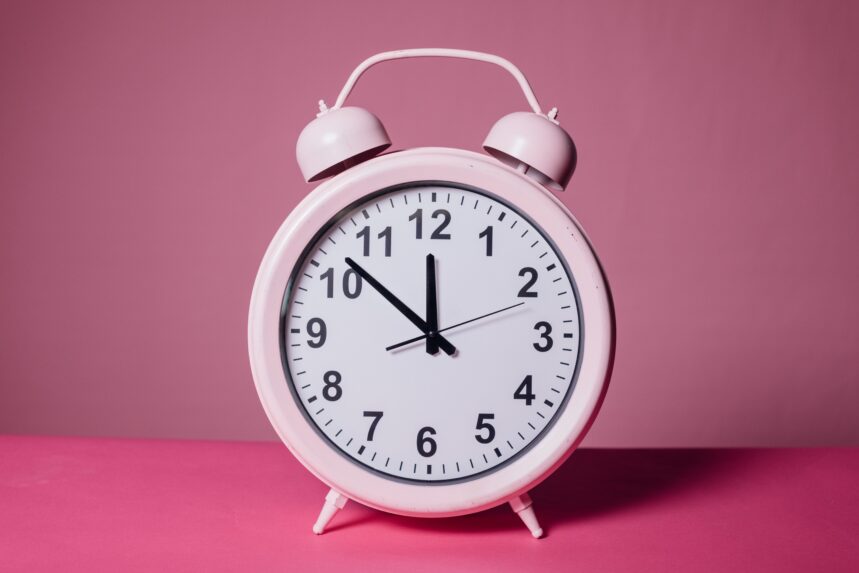
The effects of an edible can last between 4-8 hours, but it varies by person and dosage amount. On average, the high from a THC edible may peak after 2 hours and last between 5 and 6 hours.
How long do edibles stay in your system?
When edibles (specifically THC edibles) are digested, they transform into THC metabolites. These metabolites can store in the body’s fat and can stay in the system for quite some time. Typically, the half-life (or the amount of time it takes for half of a substance to leave your body) or cannabis can range from 3-12 days.
The amount of time THC is detectable by a drug test typically depends on the type of test used. For instance, THC can be detected in saliva for 1-3 days, in blood for 3-4 days, in urine for up to 30 days, and a hair sample for up to 3 months.
Do edibles make your eyes red?
Edibles can definitely make your eyes a little bloodshot, just like smoking cannabis can. That’s because THC is a vasodilator, so it increases blood flow across the body, including to the whites of the eyes.
How to make edibles?
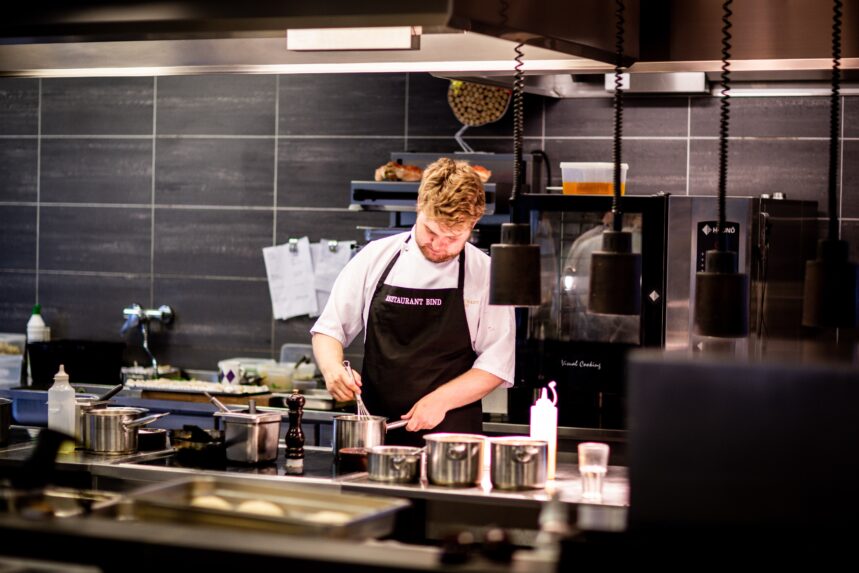
Making homemade edibles is an excellent choice if you want to use up some of the flower you already have at home! There’s a skill involved in cooking with cannabis, but you can learn to make both THC edibles and CBD edibles in your own kitchen.
For inspiration, check out our recipe for vegan CBD-infused brownies, or learn how to make CBD tinctures or THC tinctures at home for a longer-lasting homemade edible dose.
Table of Contents

